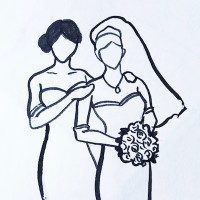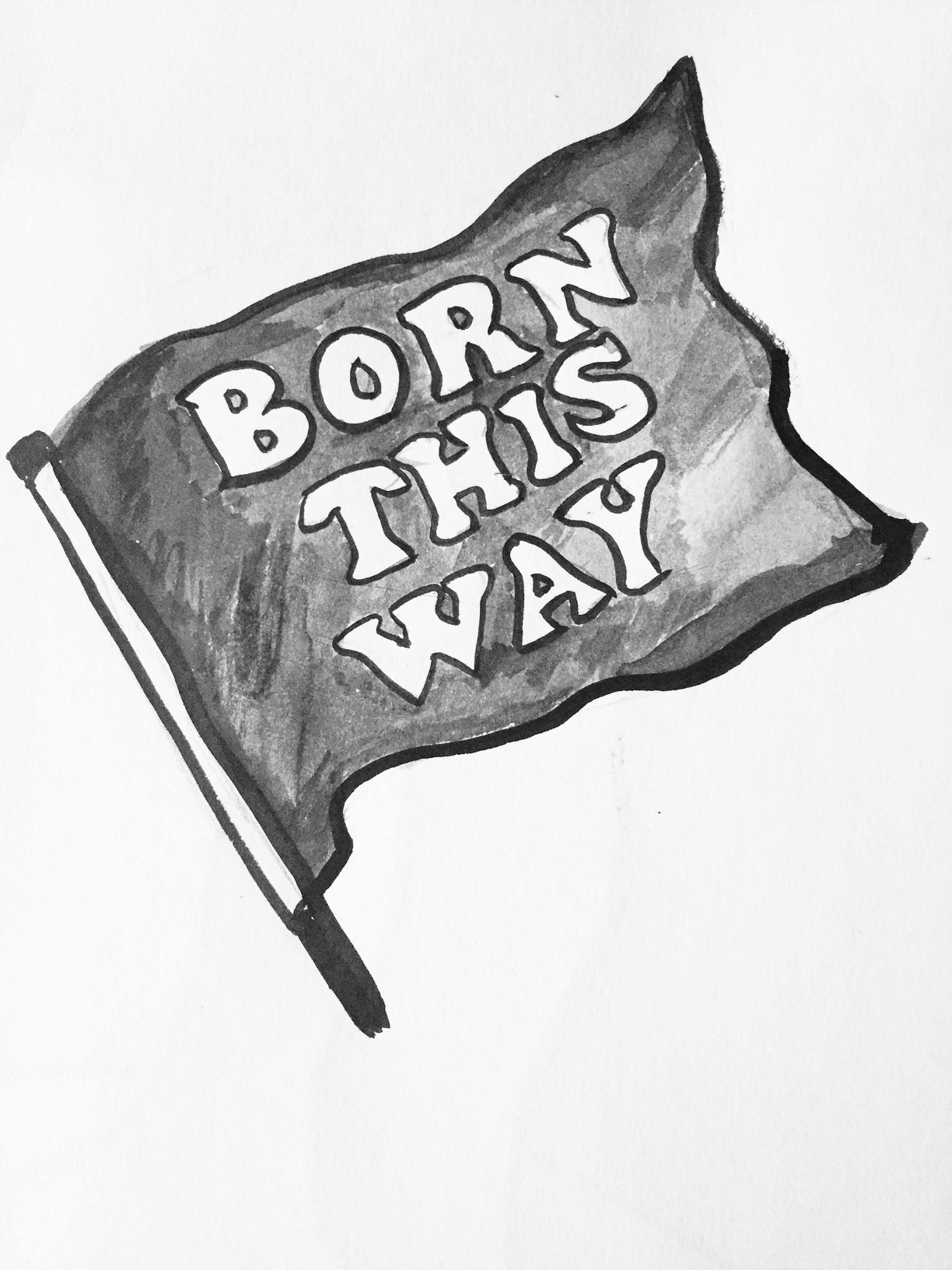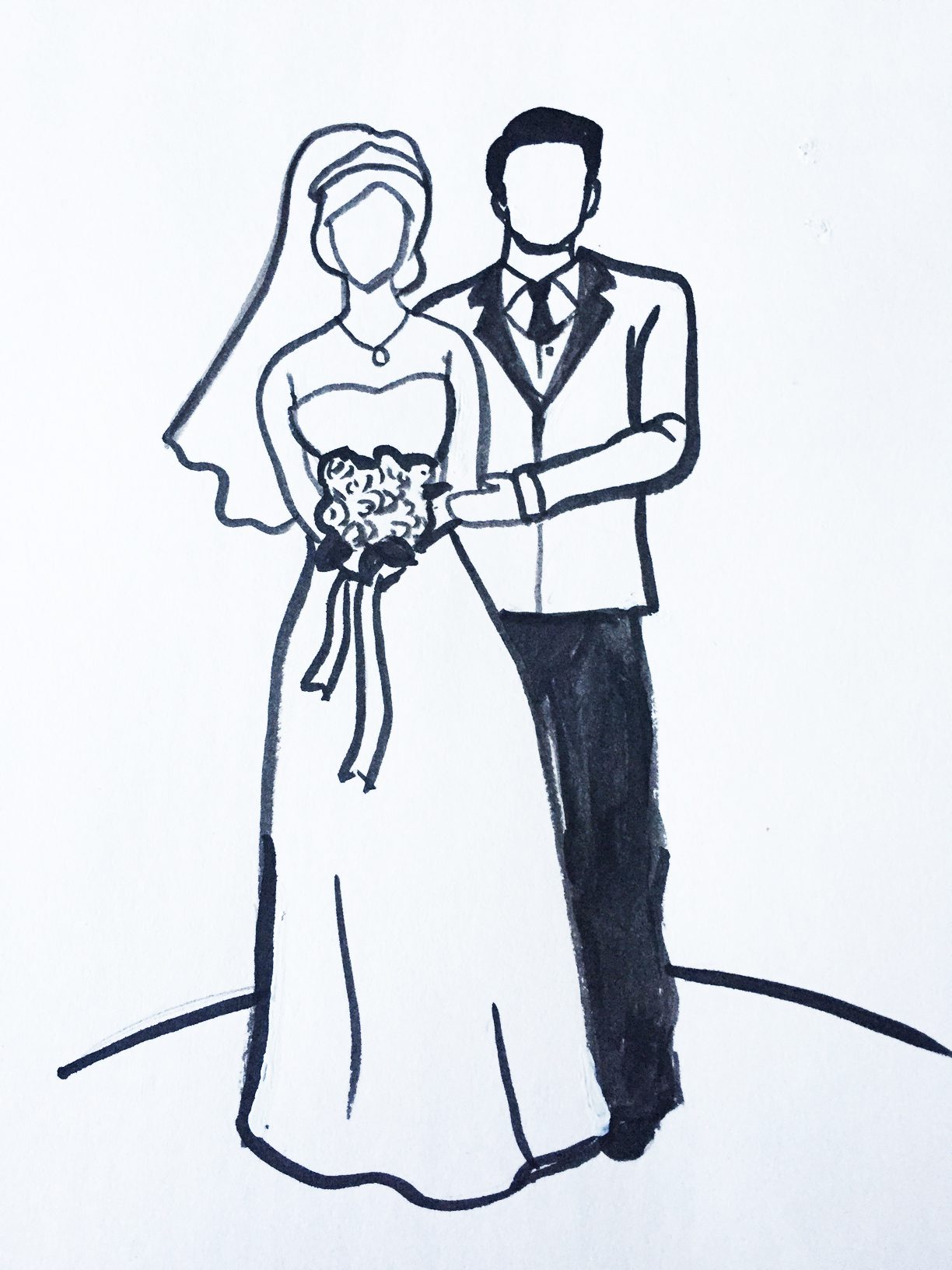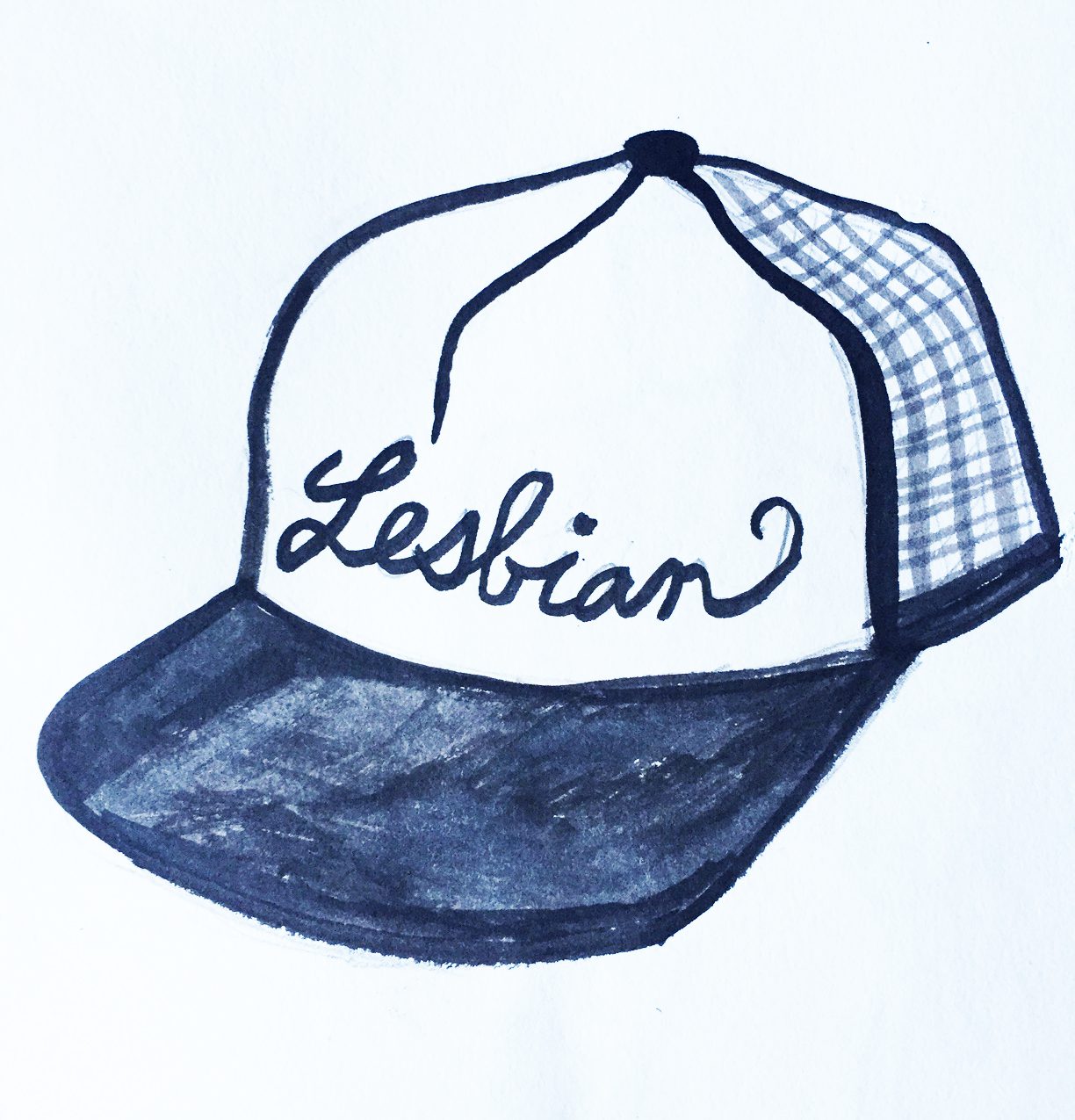“Female homosexuals are somehow more complex to study….”
–psychologist Andrea Camperio-Ciani, Journal of Sexual Medicine, 2010
Within ten minutes of riding in my colleague’s car, I know she’s a lesbian. I’m familiar with lesbians, having just graduated from a hippie college where I hung out with some. What tells me? She’s wearing a leather jacket and a rainbow-colored ear cuff. The cassette she pops into the deck is Joan Armatrading. But it’s not until we are on the return drive from Spokane to Seattle, two days later, that she says, “I’m gay.” I tell her I know. She’s surprised. She shouldn’t be surprised; we’ve been flirting the entire weekend of the conference. I tell her I’m attracted to her.
The last two hundred miles of our trip are excruciating. I’m driving now, and, although it’s only October, I sing “Lullay thou little tiny child” to myself to calm my heart. But once we get to her apartment, I make the first move. A week later, I’m breaking up with my boyfriend and looking for my own place to live.
I love spending time with Karen—in my journal, I note with surprise that I feel no “guilt or weirdness about sleeping with a woman.” I love that we share a physical, cultural, and social experience; I have never felt so comfortable in my own body and so confident as a woman.
But I’m in turmoil about What It All Means. I make a list of twenty-three fears about being a lesbian. I’m afraid, for instance, of being indecisive and “wearing lesbianism like a hat.” What if I never figure out what I truly am? What if I just like sex with a woman but I’m not a lesbian? I’m afraid, too, of losing my responsiveness to men, of never having a normal life, and of having to hide parts of myself. Mostly though, what bothers me is my newly destabilized identity.
*
Almost thirty years have passed since that day, and still no one knows exactly what shapes sexual orientation. Researchers have considered the role of hormones in the womb, brain differences, and genetics. They’ve measured the ratio between the second and fourth fingers. They’ve studied twins separated at birth. Anthropologists have compared same-sex affectional and sexual behavior across cultures; biologists have found same-sex interaction in many non-human organisms, from bonobos to fruit flies. But no one can definitively say that a particular combination of biological and environmental factors will produce a person who identifies as gay or straight. Still, in the popular imagination, the cause has become increasingly clear: it’s nature over nurture.
At the Seattle Pride Parade a week after the Supreme Court overturned the Defense of Marriage Act, people waved flags that said, “Born this way,” after a Lady Gaga song that championed gay rights. The same week, Macklemore’s song, “Same Love,” hit the Top 40. Mary Lambert sings the chorus: “And I can’t change/Even if I tried/Even if I wanted to.” According to Gallup surveys, an increasing number of Americans believe that sexual orientation is innate—from just 13% in 1977 to 47% in 2013. Clearly, this view correlates with an increasing acceptance of LGBT legal rights. If sexual orientation is innate, like race and gender, then rights linked to sexual orientation are as inalienable as those associated with women and people of color. The LGBT community has benefited tremendously from this shift in beliefs.
And yet. We know almost nothing about why a woman might be straight, lesbian, or bisexual. All that research into homosexuality? Almost all of it has been conducted on men. In a 2010 article in the Journal of Sexual Medicine, an international team of biological and social theorists summarized the literature on the causes of homosexuality but limited their focus to men. Why? Because there are more gay men than lesbians and there is more data on gay men than on lesbians. (They also thought there are more negative attitudes toward gay men than toward lesbians, especially in religious communities. But that is a question for another day.) In another literature review that year, in the North American Journal of Psychology, W.J. Jenkins lamented the “paucity” of research on lesbians and bisexual women.
What little research there is on women and sexual identity suggests that choice—the ability to change—may play a more significant role with women than with men. But this research is not informing the dominant narrative about what shapes sexual orientation. I worry that we are losing something important when we tell ourselves that we are “born this way,” whatever way that is, and that no one would ever choose to be lesbian.
*
The traditional coming out narrative—early same-sex attraction, followed by experimentation and self-questioning, followed by coming out—doesn’t reflect my experience. My first year in high school I fell for the teacher’s assistant in my algebra class, a skinny sophomore with braces. He and I spent the next four years together. I broke it off after leaving town for college. I dated several men during my freshmen and sophomore years and moved in with one, a musician, just before I turned twenty. After graduation, I took a job with an adoption agency, and that’s where I met Karen, a social worker. I left the musician for her.
Until October 1985, the genre of my life’s narrative seemed conventionally heterosexual. Then I met Karen. I told my parents I was dating a woman and might be a lesbian. My parents had watched me fall for boys and men since I was a kindergartner. It was not a surprise that, when I told them about my relationship with Karen, they were sure I was going through a phase. And maybe I was.
*
In a 2000 literature review in the Journal of Social Issues, R.C. Veniegas and T.D. Conley compared surveys of lesbians and bisexual women on the role of choice in their sexual orientation. Although the surveys had methodological problems, they showed that, in general, women were more likely to see a role for choice in their sexual identities than were men. In a 1996 survey, almost two-thirds said they had at least “partial choice.” Jenkins also noted “that with regards to ‘erotic plasticity’ women are generally thought to be more malleable than men; and there are compelling arguments made about women ‘switching’ sexual orientations at various points in their lives.”
“Erotic plasticity” has not been much acknowledged in coming out narratives, not in the lesbian communities of the 1980s when I came out, and not now, in the national conversation about LGBT rights.
*
Girls I was crushed out on, childhood girlfriends I rubbed against during sleepovers, pictures of naked women that I found while babysitting; they made me feel all melty inside. So it’s not as if there isn’t a lesbian story to tell. It’s just that there’s this other story, too, of boys with skinny butts and wispy facial hair. Of the condom packet I saved from my first intercourse with a man. The anxiety of sorting through these experiences for a common thread can’t be underestimated. Three months into my relationship with Karen, I wrote in my journal, “Now I fear I’ll never belong. I have loved men deeply. I love a woman now.” Was I really straight, a pretender in the lesbian community? Or was I uncovering my true nature and deluded about my past loves?
I can hear the chorus of responses to this story so far: I’m bisexual. Of course. That’s it. Perhaps if the lesbian community (not to mention the straight community) hadn’t been so hostile to bisexuality in the 1980s, I could have come out bi and been done with it. And yet. I’ve been with women almost thirty years now, more than half my life. I’ve been with my partner Arline for sixteen, and I can honestly say that I have not had a serious crush on another person in those sixteen years. Not another woman and not a man. It’s been so long since I was intimate with a man that when I try to imagine that kind of coupling, it feels alien, like making love with a Martian. The absent breasts. The extra appendages. I don’t mean men’s bodies repel me—I hate that juvenile revulsion that some gay men express about women’s bodies and some lesbians about men’s—but I do mean that sex with a man now would probably feel awkward, at least at first.
So it’s hard to feel now that “bisexual” represents my experience. As a practical matter, I sometimes refer to myself as a lesbian. But the labels don’t apply well to me—or at least my identity hasn’t been stable enough for one to stick; no one label embraces all of my experience. It’s truer to say that I was mostly heterosexual once and I’m mostly lesbian now. But that implies change and, yes, choice. I did change, because I wanted to. Could I still? I probably could, if I really wanted to. How many feel as I do but fear that talking about it would invite ridicule and set back the march toward legal rights?
*
The scientific research that makes the news tends to be the most sensationalistic—and overly simplified. I remember sitting in a café in the early 1990s, listening to gay men tease each other about the size of their hypothalamus. This was after Simon LeVay’s brain measurements were reported. That he measured a small number of dead brains and that his method of determining the sexual orientations of the corpses was suspect got little attention in the media. We can expect much less attention, then, to a 2001 article in Personal Relationships by psychologist Letitia Anne Peplau that argued that a model that focuses on stable sexual identities doesn’t fit the lived reality of many women. She describes historical examples from China, Lesotho, Suriname, England, the United States, and indigenous North America of culturally sanctioned opportunities for women to have intimate, sometimes sexual, relationships with women even as they continued to fulfill social roles we now associate with heterosexuality. She argues that much of today’s research into sexual orientation is based on an assumption of a stable sexual identity—it starts by asking how we can explain why some women are lesbians and some are straight. A better question is, “What is the nature of women’s sexuality and how does it influence their intimate relationships?” The answer, she says, given the evidence so far, is that women’s sexuality is fluid and we like to couple up.
I’m standing in front of the US Appeals Court in Seattle with Arline, celebrating the Supreme Court’s decision to overturn the Defense of Marriage Act. Our upcoming wedding, scheduled in the months after Washington State instituted same-sex marriage, will now reap both state and federal benefits. Just as important is the sea change in attitudes that has gotten us here. I’m an end-of-the-curve Baby Boomer who grew up with the 1970s feminist movement, and I’ve felt ambivalent about marriage as an institution for many years. But now, at fifty, I want to celebrate. I want to stand up in front of family and friends and kiss my bride. This moment is a fulfillment of that old chant: we’re here, we’re queer, we’re fabulous, get used it.
And yet. The narrative of lesbian identity that bugged me in the 1980s is the same narrative of sexual identity now, and it’s still bugging me. I’ve made a certain peace with the ambiguities of my identity—I use “lesbian” knowing that it doesn’t fully represent my experience—but in some ways I’m still asking: What Does It All Mean?
In search of answers, I find the work of Lisa Diamond, a developmental psychologist at the University of Utah. She says, in Sexual Fluidity: Understanding Women’s Love and Desire, that much of the research into sexual orientation focuses on men’s experiences, and if we focused on women’s experiences, we might call it “relationship orientation.” Like Peplau, she thinks we’re asking the wrong question when we try to separate nature from nurture. Maybe any biological component is more flexible than fixed. In a study of almost a hundred non-heterosexual women over a number of years, Diamond found “the abrupt emergence of novel erotic feelings and experiences in specific contexts.” A woman would suddenly find herself in love with a woman, after some time spent dating men, and she would have to incorporate this new experience into her sense of identity (the reverse also happened). While many gay men remember being attracted to other men before puberty, many women in relationships with women had not felt attracted to women in general but suddenly found themselves attracted to a specific woman.
Does this mean that lesbians “choose” to be with women? Diamond, and other researchers, say no. Most likely, Diamond says, we all have a biological predisposition on a continuum of sexual attraction to men and women. In order for a woman who has been primarily heterosexual to begin a relationship with a woman, she needs to be situated far enough along that continuum to consider a same-sex relationship when the opportunity presents itself, and she needs to be psychologically flexible enough to act on it. She also needs to be exposed to the idea that same-sex attraction is possible.
For me, going to high school in the late 1970s, homosexuality was a far-off city that I would never visit. There were rumors in high school about some kids. One of my close girlfriends was helplessly in love with a boy that others said was gay. He seemed to like her attention but would never get physically close with her. I didn’t join the lunch table speculation because I didn’t have any idea how one would know another person was gay. Also in high school, my best girlfriend and I told each other, even as we were dating boys, that if we were lesbians we would love each other. I wrote in my journal that this really meant, “I love you but I can’t be a lesbian.” By “can’t,” I think I meant that a sexual relationship with her felt literally impossible. Same-sex relationships were in that far-off city, and I didn’t have a car to get there.
In college, a progressive liberal arts school south of Seattle, I began to meet real-life lesbians. At first, when people pointed out lesbians on campus—a red-haired student, two professors who supposedly had a baby together—I looked at them the way I might look at an unfamiliar animal at the zoo: the sign says it’s some kind of antelope, but what makes it different from other antelopes? As hard as I looked, I couldn’t see much difference. In my second year, I took a class on Virginia Woolf that was full of them, and for the first time I developed some close friendships with lesbians. By now I was living with my musician boyfriend, and, if my journals are to be believed, we were obsessed with love and sex: we talked about our lovers before each other, what our crushes on other people meant, whether we would ever act on those crushes. Among my many infatuations—most of which lasted just weeks—were several women. Now I had the car that might take me to that far-off city.
If, as Diamond says, my potential for a relationship with a woman depended on my exposure to the idea that same-sex attraction was possible, then I had been exposed. The next requirement: opportunity. And then I met Karen.
When I say I had a choice about my sexual identity, I don’t mean that falling in love ever felt under my control. I had no premonition, getting into the car with Karen, that my life was about to radically change. I’d been working at the adoption agency for a few months, and she seemed interesting. When the staff prepared to go to the conference, we both made sure to carpool with each other; we didn’t want to spend six hours in a car with the boring adoption counselors. I wanted to get to know her better, but I didn’t anticipate that those hours together would flood my brain with the neurochemicals that mean love. Everything about her intrigued me: her Syracuse accent, her funny, rambling stories, even her hearing impairment, which meant that when I wanted to say something I had to lean forward so she could read my lips. When we stopped at a rest stop on the way back and drank tea bought from the highway volunteers, she propped her foot on the dashboard and something about this posture made my knees weak. I didn’t choose to fall in love.
But I chose to act on it. And I chose to leave the musician, and I chose to go with Karen to Washington, DC, where we bought rings from a sidewalk vendor to symbolize our commitment. We laughed when they turned our fingers green. I chose, too, to persist in this relationship despite the headwinds of homophobia. Among those twenty-three fears about being a lesbian were the ones that would end up really mattering: Will this impact my ability to get a job? Will I have to constantly hide important parts of me? I won’t be able to talk about it with my family. I won’t have the security of marriage and the knowledge that my marriage is accepted by the larger community. I’ll be stereotyped; my writing career will be negatively impacted. These fears turned out to be true, and coping with them changed me in subtle and profound ways. I developed that sense of double consciousness that W.E.B. Dubois said African Americans need for survival: “It is a peculiar sensation, this double-consciousness, this sense of always looking at one’s self through the eyes of others, of measuring one’s soul by the tape of a world that looks on in amused contempt and pity.” I decided that love was worth it. I chose.
In the years since, almost thirty of them, I have not had another relationship with a man. A crush in graduate school was the last infatuation. After Karen and I broke up, and I began to see Arline, I called to tell my mother that I was seeing someone new. Her first words were: “Is it a man?” She still wasn’t sure my orientation had changed. But it had.
In Diamond’s study, two-thirds of the women had changed their identity label after ten years, and some had chosen to stop using labels at all. “Hence,” Diamond says, “models that presume stability to be the normative state of a mature sexual identity may be inaccurate.” She goes further: researchers need to look at variability for everyone, not just lesbians and bisexual women. Maybe the linear model of sexual development has blinded us to the reality that for many people, sexuality is fluid, and a flexible sexual identity is, in fact, the norm and not the exception.
So what are we losing by acceding to the narrative of innate sexual orientation? Veniegas and Conley argue that we women, especially feminists, value choice and control over our sexuality in other ways—how we have sex, whether we have children. Why wouldn’t we value choice regarding the gender of our partners? Maybe we—at least some of us—do have a choice. And so what if we make it?
Let me be clear: I’m not interested in changing. I’ve made my choice, and I’m happy.
It’s an unseasonably warm March day in 1999. Arline, who teaches at the same community college as I do, has invited me to lunch. I know this is a date, not a working lunch, and I spend an hour deciding on the blue silk shirt, the faded jeans, the gold earrings. We sit in the window of a restaurant with a view of Puget Sound, eating oysters and drinking white wine. We talk for hours. Later, she pins me to the wall of a parking garage in downtown Seattle and presses her mouth over mine. I about dissolve into the wall behind me. No one has ever made me feel this way.
And still today her kisses unhinge me like nothing I’ve ever known. With those kisses, she could lure me onto one of those one-way trips to Mars recently offered by a Dutch company. Seven months later, I’d be landing on red dust, still staring moonily into her eyes. We are lovers, and we are also best friends and life partners. We manage pretty well the little business that is García-Green, Inc. I vacuum and clean the bathroom; Arline takes out the garbage and keeps a meticulous budget, tracking every penny of our spending. In September 2013 we married, surrounded by friends, parents, siblings, children, and grandchildren. Because we live in Seattle, our marriage is recognized by our state and federal governments.
I don’t underestimate the tremendous gains that have been made over the decades since I first questioned my identity. But I wonder what is lost when the narrative explaining my life’s journey is reduced to the simple song lyric: “born this way.” I like to believe that, at least some of the time, I choose my own destiny, and that I still deserve the dignity of rights and respect.
***
Rumpus original art by Sylvia Nguyen.









8 responses
Really, really lovely– and articulate about something that doesn’t get much articulation.
This article was beautiful!
I shared this article with so many friends yesterday and it has sparked some incredible discussion. Honestly, I have yet to find something that speaks so truly to how I’ve felt since coming out. Thank you. Thank you.
“Maybe the linear model of sexual development has blinded us to the reality that for many people, sexuality is fluid, and a flexible sexual identity is, in fact, the norm and not the exception.”
There is no maybe about it. You’re spot on.
This is it, precisely. Thank you for articulating something I wasn’t able to articulate for myself.
Have you seen my book, Queer By Choice (Routledge, 1996)? I think you would find it enlightening.
Thanks, everyone. I can’t tell you how gratifying it is to find that others feel the same way. I haven’t seen your book, Vera; I’ll check it out.
Sigh. We love who we love, and every good love story makes me week in the knees, like the kiss in the parking garage after wine and oysters. In the big biological picture, strict labels make no sense. In the history of human experience, why would everything but sexuality be on a continuum? I can imagine the evolutionary benefits of women and men loving each other and coupling; and women and men also contentedly coupling with their same gender given the fluidity of human circumstance. The big question is how did people get so judgmental, obsessed, and rigid about who people fall in love with? It is downright unnatural.
Click here to subscribe today and leave your comment.